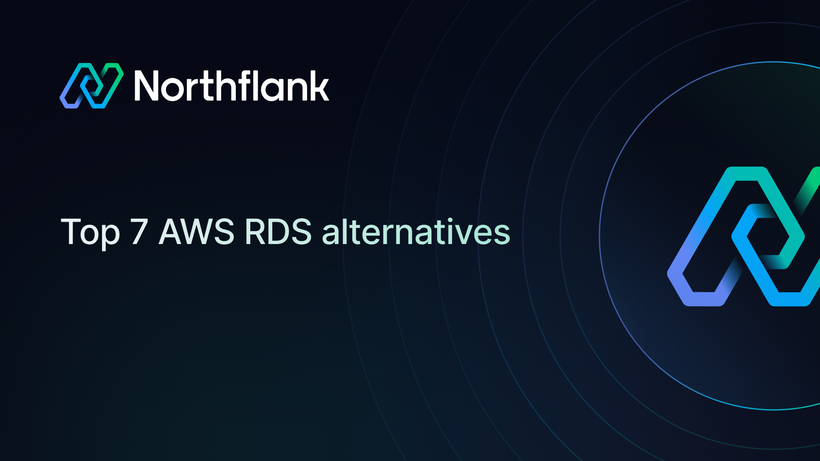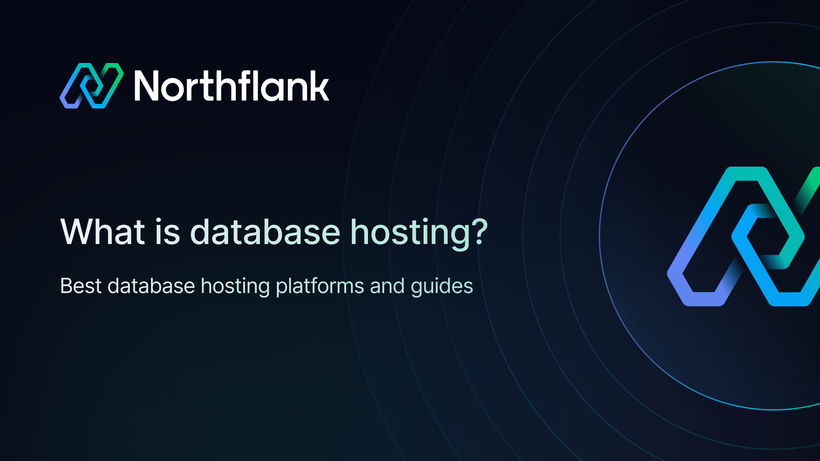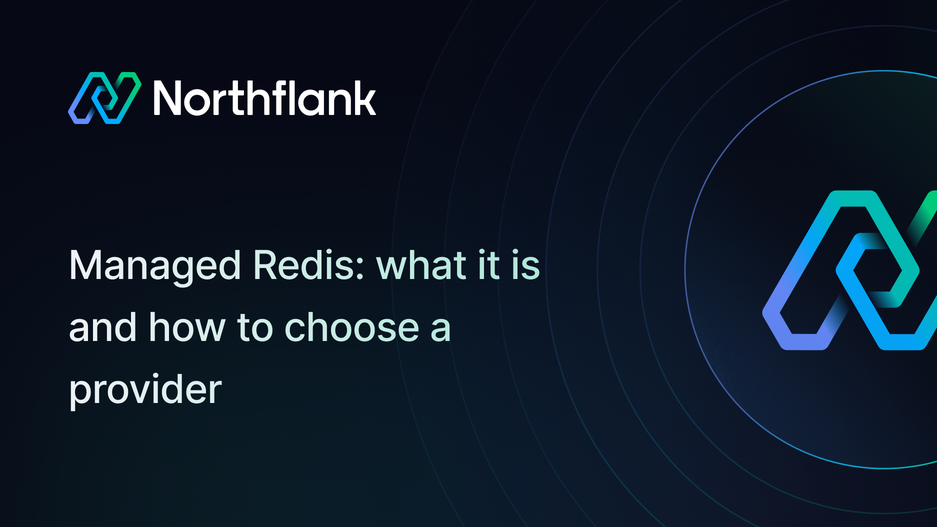

Managed Redis: what it is and how to choose a provider
Managed Redis is a fully managed database service where a provider handles operational tasks like provisioning, backups, scaling, and monitoring. Key options include:
- Northflank: Kubernetes-native managed Redis starting at $2.70/month. Deploy in Northflank's cloud or your own infrastructure (AWS, Azure, GCP, Civo, Oracle, bare-metal) with developer-friendly CLI & API. Includes pause/resume for dev databases to save costs
- Cloud platforms: Azure Managed Redis, AWS ElastiCache, and Redis Cloud offer tightly integrated solutions within their ecosystems
Choose based on your priority: deployment flexibility and transparent pricing, or native cloud integration.
Redis powers demanding applications, but running it in production means managing replication, failover, backups, and scaling, operational tasks that distract from building features.
Managed Redis handles these operations for you. This guide covers what it offers, how to choose a provider, and how to get started.
Redis is an open-source, in-memory data structure store used as a database, cache, message broker, and streaming engine. It stores data in RAM for sub-millisecond response times and supports data types including strings, hashes, lists, sets, sorted sets, JSON documents, and vector embeddings.
Managed Redis means a provider handles all operational tasks, like provisioning, replication, backups, monitoring, and scaling. You deploy through a web interface or API, connect your application, and the provider manages the rest.
Self-hosting Redis requires configuring high availability, implementing backups, monitoring memory usage, handling security updates, and planning for scaling, which creates operational overhead that can become a bottleneck for small teams and high-growth applications.
| Feature | Self-hosted Redis | Managed Redis |
|---|---|---|
| Backups | Manual configuration and scheduling | Automatic backups with point-in-time recovery |
| High availability | Configure Redis Sentinel or Cluster manually | Built-in failover with minimal downtime |
| Scaling | Plan capacity, provision servers, reconfigure | One-click vertical and horizontal scaling |
| Security | Configure TLS, networks, and access controls | TLS encryption, network isolation by default |
| Monitoring | Set up metrics, logs, and alerting | Built-in monitoring and proactive alerts |
| Patching | Manual security updates and version upgrades | Automated patching with zero downtime |
Redis is ideal for workloads requiring fast data access and real-time operations:
- Caching: Store frequently accessed data to reduce database load and latency by up to 80%
- Session management: Keep user sessions accessible across any server without sticky sessions
- Real-time analytics: Track page views, events, and metrics with sub-millisecond speed for live dashboards
- Message queues and pub/sub: Build job queues and real-time messaging for chat, notifications, or microservices
- Leaderboards and rankings: Maintain ordered data efficiently for gaming leaderboards and social feeds
- Rate limiting: Prevent API abuse with fast counters and automatic expiration
- AI and vector workloads: Enable semantic caching for LLMs and memory for AI agents with vector search
Evaluate providers based on these critical features and questions:
- High availability and replication: What's the uptime SLA? How long does failover take? Can you deploy across availability zones? Look for primary-replica replication with automatic failover via Redis Sentinel, and multi-region support for global applications.
- Backup and disaster recovery: How frequently are backups taken? Can you restore to any point in time? Where are backups stored? Ensure automated backups, long-term retention, easy restoration, and data import capabilities.
- Security and compliance: Is TLS enabled by default? Can you deploy in private networks? What compliance certifications exist? Expect TLS encryption, authentication, network isolation, and standards like SOC 2, HIPAA, PCI DSS, or GDPR.
- Scaling capabilities: Can you scale without downtime? How many replicas can you add? Is Redis Cluster supported? Look for simple vertical and horizontal scaling, plus Redis Cluster for sharding large datasets.
- Monitoring and observability: What metrics are available? Can you export to your monitoring stack? Are there pre-built dashboards? Quality providers offer memory usage, latency, hit rates, log streaming, and slow command analysis.
- Developer experience: Is there a CLI for local access? How complete is the API? Can you automate via infrastructure-as-code? Prioritize intuitive interfaces, local forwarding, comprehensive APIs, and clear documentation.
- Pricing and cost predictability: What's included in the base price? Are there minimum commitments? Can you estimate costs upfront? Compare instance-based vs serverless pricing and watch for hidden costs like data transfer.
Several providers offer managed Redis, each with different strengths depending on your infrastructure and priorities.
Northflank provides Kubernetes-native managed Redis with flexible deployment options. You can run Redis on Northflank's cloud or deploy to your own infrastructure (AWS, Azure, GCP, Civo, Oracle, bare-metal) while Northflank handles the management layer.
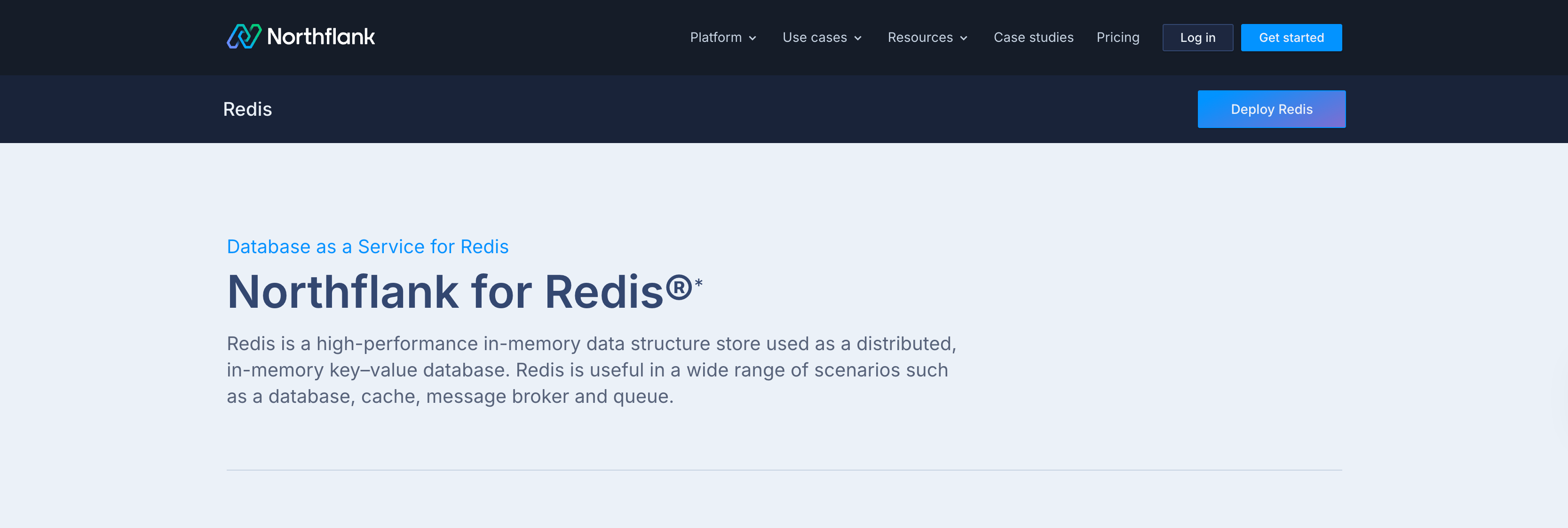
Key features:
- Starting at $2.70/month with transparent, serverless pricing
- Ready for scale with horizontal and vertical scaling
- Backups and restores with automated scheduling
- Real-time monitoring with log tailing and performance metrics
- Pause/resume for dev databases to save costs
- Advanced networking with secure private networks and CLI proxy
- TLS-secured connections by default
- Developer-friendly CLI tools and local forwarding for debugging
- Enterprise support available
Best for teams wanting deployment flexibility, predictable pricing, and developer productivity without vendor lock-in, from startups to enterprises.
Microsoft's Redis offering built on Redis Enterprise technology. It integrates deeply with Azure services and requires commitment to the Azure ecosystem.

Key features:
- Multiple performance tiers (memory optimized, balanced, compute optimized, flash optimized)
- Native integration with Azure services
- Microsoft Entra ID authentication
- Zone redundancy and high availability
Best for teams already heavily invested in Azure infrastructure. Pricing can be complex with additional costs for networking, storage, and cross-region traffic.
Amazon's managed Redis service integrated with AWS services. Offers both serverless and node-based options, though node-based clusters can be complex to configure and scale. You're locked into AWS infrastructure.

Key features:
- Compatible with Redis OSS and Valkey (open-source Redis fork)
- VPC isolation for security
- Native integration with AWS services (CloudWatch, CloudTrail, IAM)
- Advanced configuration options for node-based clusters
- Serverless option for simplified deployment
Best for teams committed to AWS infrastructure. Note that ElastiCache does not support Redis Enterprise features like Redis Query Engine or active-active geo-distribution.
Google's managed Redis service focused on simplicity within the GCP ecosystem. Limited to Google Cloud infrastructure with fewer deployment options.
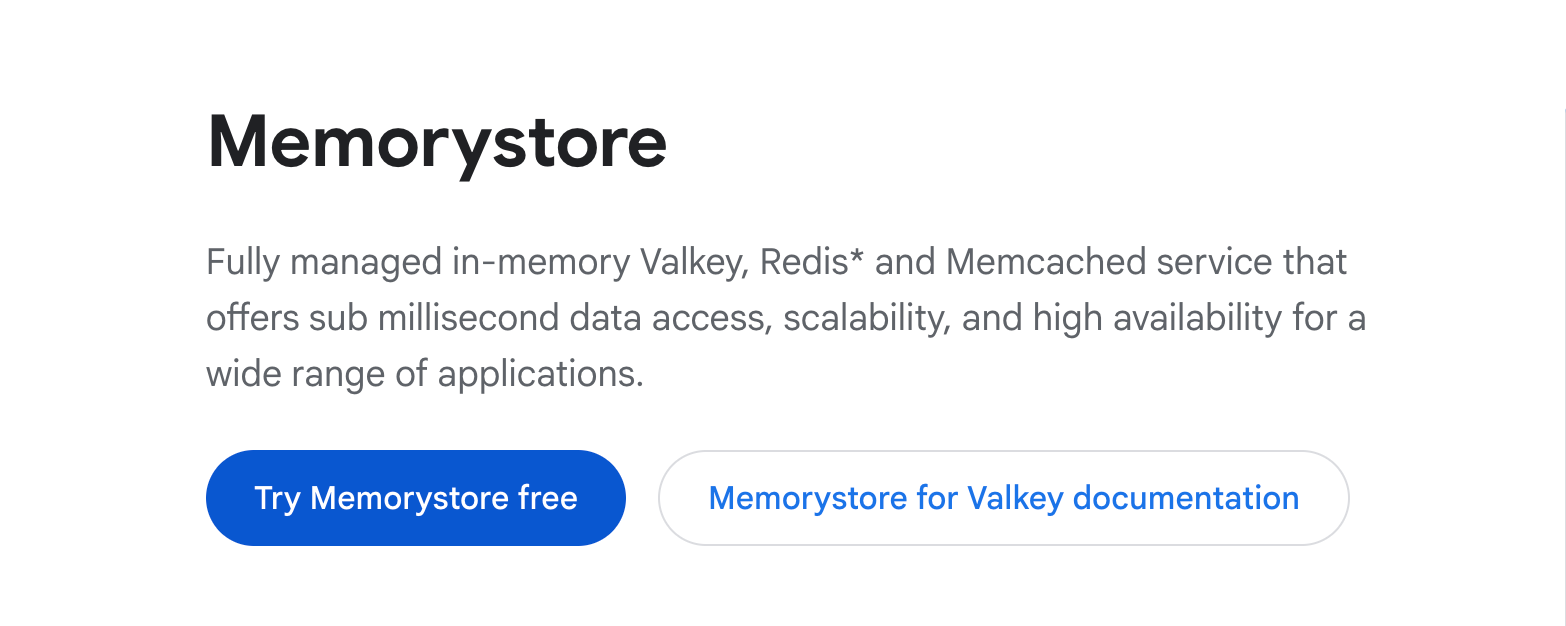
Key features:
- Basic and standard tiers with automatic failover
- Integration with GCP services
- Supports Redis 7.0+
- Simple deployment workflow
Best for teams using Google Cloud Platform. Regional availability is more limited compared to other providers.
The managed service from Redis Ltd. offering the latest Redis features. Pricing starts higher than alternatives, and you're dependent on Redis Ltd.'s infrastructure choices.

Key features:
- Latest Redis versions (including Redis 8)
- Active-active geo-replication
- Redis Stack modules (vector search, JSON, time series data)
- Available on all major clouds
Best for teams needing the latest Redis features who can justify premium pricing for advanced capabilities.
Tips on choosing the right provider
Cloud platform providers (Azure, AWS, GCP) work best when you're already committed to that ecosystem, though you'll face vendor lock-in and complex pricing.
Redis Cloud offers the latest Redis innovations but at premium pricing.
Northflank stands out for teams prioritizing deployment flexibility, transparent pricing starting at $2.70/month, and developer productivity for startups and enterprises alike. You get Kubernetes-native tooling, the ability to deploy anywhere (including your own infrastructure), and features like pause/resume that directly reduce costs, all without vendor lock-in.
Deploying managed Redis is straightforward across most providers. The key is choosing the right configuration for your needs before deployment.
Before deploying, decide on these key configurations:
- Redis version: Use the latest stable version (Redis 8.2.2 or 7.2.11) for new projects
- Replication: Enable at least one replica for production high availability
- Memory size: Start with your estimated dataset size plus 20% buffer for Redis overhead
- TLS: Enable encryption by default for secure connections
- Backups: Configure automatic daily backups with appropriate retention
- Network access: Use private networks for production, public access only for development
Northflank makes Redis deployment simple through its interface, CLI, or API. Here's the quick process:

- Create an addon: Navigate to your project and click "Create New" → "Addon"
- Select Redis: Choose from versions
- Enable TLS: Secure connections are enabled by default
- Configure advanced options:
- Redis Sentinel: Add automated failover monitoring for high availability
- Maxmemory policy: Choose eviction strategy (noeviction, allkeys-lru, volatile-lru, etc.)
- Zonal redundancy: Deploy replicas across multiple availability zones
- Backup schedules: Set automated backup frequency and retention
- Select resources: Choose compute plan based on your workload requirements
- Link to secret groups: Automatically inject connection details into your services
Your Redis instance provisions in minutes with automatic backups, real-time monitoring, and TLS-secured connections. Northflank also automatically generates and injects connection details into your applications as environment variables.
For detailed deployment instructions, see the Northflank Redis deployment guide and learn how to migrate your existing Redis deployment to Northflank.
Sign up for a free sandbox to get started, or book a demo to discuss your specific needs with our expert engineers.
